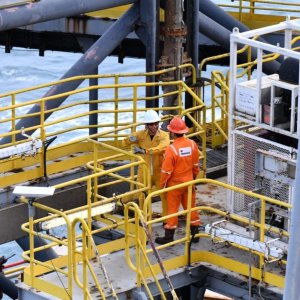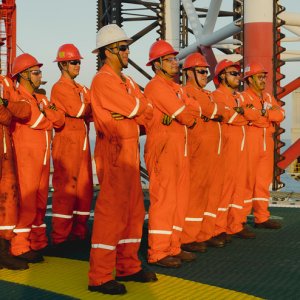Expanding Labyrinth of Pipelines, Risers & Related Infrastructure
STORY INLINE POST
Connecting every piece of offshore infrastructure in the Mexican sector of the Gulf of Mexico through a pipeline system was never going to be an easy prospect, but as the number of platforms has multiplied, so has the challenge of laying pipelines to connect them to onshore and offshore storage. Today, a labyrinth of pipelines lies on the Mexican seabed, particularly concentrated around Pemex’s most productive shallow water projects, Cantarell and Ku-Maloob-Zaap, in the Campeche basin.
There are several companies working in Mexico that have the capabilities and focus to deliver on these pipeline projects that Pemex requires to connect its offshore infrastructure to the rest of the value chain. Amado Yañez Osuna, Director General of Oceanografía, a company specialized in providing offshore services to the Mexican oil and gas industry, explains that “pipelaying projects are not easy, because they require so much investment in barges, equipment and personnel. Everything has to be purchased in advance, and the completion of the project depends entirely on the weather conditions, which in the Gulf of Mexico are never entirely predictable. We have spent a lot of time on pipeline projects simply waiting for the weather to clear up so that we can start work.” In order to make the process more streamlined and efficient, Oceanografía is putting an agreement in place to partner with one of the world’s leading pipeline constructors, which will increase the project capacity of the company and make large projects run smoother and faster as a result of incorporating international best practices into the business.
Robert Cheves, Vice President of Latin America for Cal Dive International, espouses the view that the pipelaying market has slowed down in the last two to three years, with only four projects going to tender, and attributes this slowdown to Pemex’s focus on preparing and introducing its integrated service contracts. Since Pemex released the integrated service contract model at the end of 2010, four pipeline installation contracts were awarded (for more information, see the overview on the opposite page).
He also makes it clear that in terms of project capacity in the Campeche basin, it is often very easy to work out which company will be able to manage upcoming projects. “Some contracts are better suited to one company than to others. For example, the contract for the installation of a 50cm subsea pipeline in the Abkatún field in 24m water depths was perfectly suited to Cal Dive International’s capabilities. For other projects, such as those in water depths of up to 75m, other companies have better suited resources. Cal Dive International could manage such a project, but we would be stretched to our maximum depth given the pipelaying vessels and assets we will have available at the time of the tender. This is a key aspect of the tendering process: a vessel named on a bid cannot currently be in use at another project, which means that by looking at our order book and the books of the other companies that are likely to compete on the tenders, it is easy to assess which companies have the assets needed to win the bid and complete the project.” Cheves explains that Cal Dive International does have deepwater vessels that could be used in Mexico for pipelaying projects, but they are currently working on projects in the US sector of the Gulf of Mexico.
Although pipeline projects have slowed down, they have not stopped completely. In May 2011, J Ray McDermott was awarded a pipeline laying contract with Pemex valued at around US$50 million, to lay three pipelines of diameters between 20cm and 50cm in the Campeche basin. While Stephen Johnson, McDermott’s Chairman, President and Chief Executive Officer was pleased to see his company working for Pemex on the offshore pipeline engineering, fabrication and installation again, Robert Cheves questions whether his competitor can turn a profit based on the low bid that won the contract. Since the beginning of 2011, Cal Dive was awarded three pipeline installation contracts, making it the most successful participant in pipeline installation tenders.



















